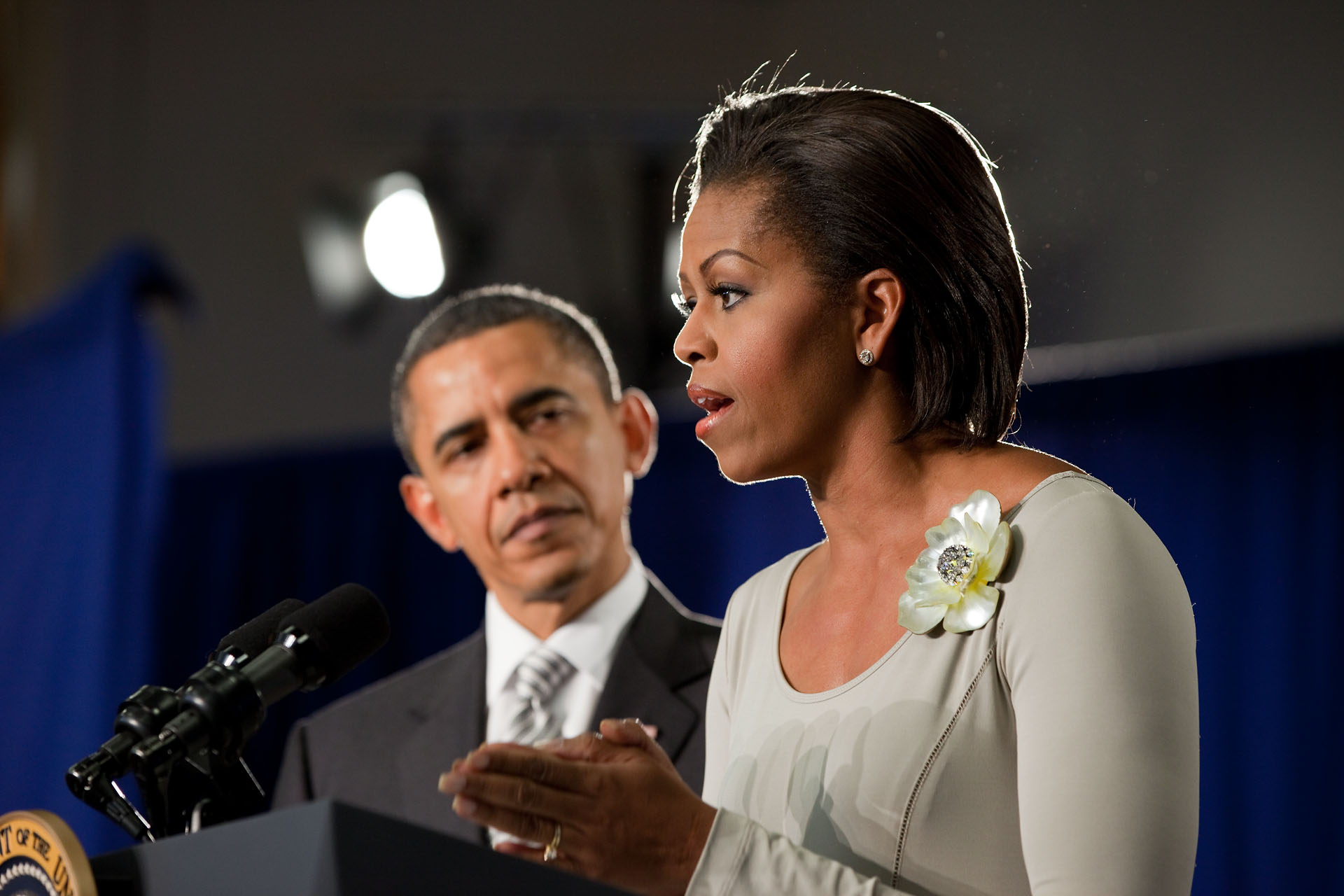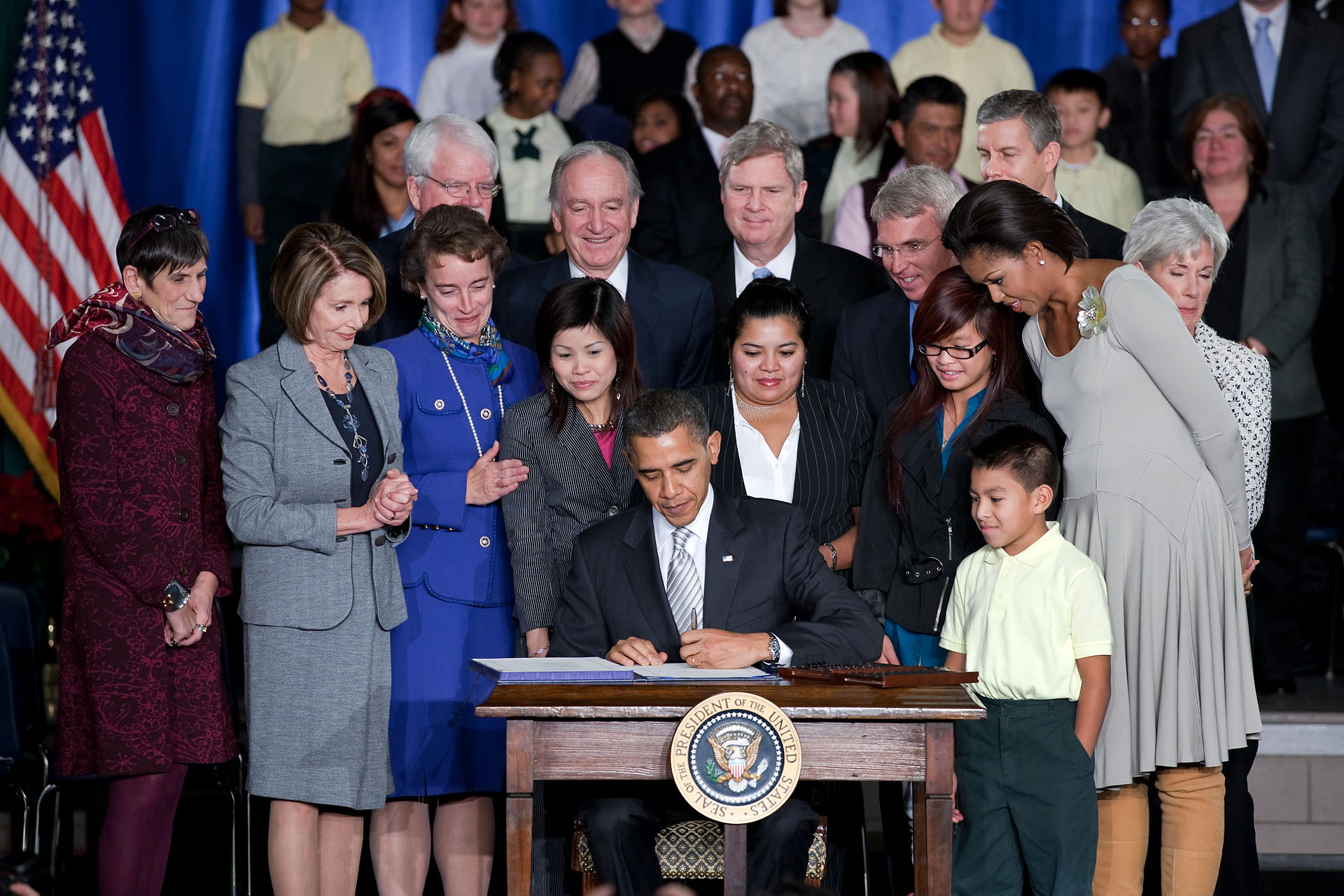
As one of her chief responsibilities and greatest passions, the First lady has dedicated herself to helping our children grow up healthy and reversing the alarming childhood obesity trend -- so the President's signing of the the Healthy, Hunger-Free Kids Act this morning at a local DC school was particularly meaningful for her:
We can all agree that in the wealthiest nation on Earth, all children should have the basic nutrition they need to learn and grow and to pursue their dreams, because in the end, nothing is more important than the health and well-being of our children. Nothing. And our hopes for their future should drive every single decision that we make.
The President applauded the bipartisan support for this significant legislation, and explained the broader implications for how nutrition affects our kids as they grow up: "we need to make sure our kids have the energy and the capacity to go toe to toe with any of their peers, anywhere in the world. And we need to make sure that they’re all reaching their potential." A fact sheet (pdf) issued this morning along with statements of support from across the political spectrum described exactly how the bill acheives these goals, and a sample menu (pdf) shows what it will mean in real life:
Improves Nutrition and Focuses on Reducing Childhood Obesity
-
Gives USDA the authority to set nutritional standards for all foods regularly sold in schools during the school day, including vending machines, the “a la carte” lunch lines, and school stores.
-
Provides additional funding to schools that meet updated nutritional standards for federally-subsidized lunches. This is an historic investment, the first real reimbursement rate increase in over 30 years.
-
Helps communities establish local farm to school networks, create school gardens, and ensures that more local foods are used in the school setting.
-
Builds on USDA work to improve nutritional quality of commodity foods that schools receive from USDA and use in their breakfast and lunch programs.
-
Expands access to drinking water in schools, particularly during meal times.
-
Sets basic standards for school wellness policies including goals for nutrition promotion and education and physical activity, while still permitting local flexibility to tailor the policies to their particular needs.
-
Promotes nutrition and wellness in child care settings through the federally-subsidized Child and Adult Care Food Program.
-
Expands support for breastfeeding through the WIC program.
Increases Access
-
Increases the number of eligible children enrolled in school meal programs by approximately 115,000 students by using Medicaid data to directly certify children who meet income requirements.
-
Helps certify an average additional 4,500 students per year to receive school meals by setting benchmarks for states to improve the certification process.
-
Allows more universal meal access for eligible students in high poverty communities by eliminating paper applications and using census data to determine school-wide income eligibility.
-
Expands USDA authority to support meals served to at-risk children in afterschool programs.
Increases Program Monitoring and Integrity
-
Requires school districts to be audited every three years to improve compliance with nutritional standards.
-
Requires schools to make information more readily available to parents about the nutritional quality of meals.
-
Includes provisions to ensure the safety of school foods like improving recall procedures and extending hazard analysis and food safety requirements for school meals throughout the campus.
-
Provides training and technical assistance for school food service providers.
The First Lady spoke on the massive coalition that came behind this bill to make it possible:
These are the basic values that we all share, regardless of race, party, religion. This is what we share. These are the values that this bill embodies. And that’s why we’ve seen such a groundswell of support for these efforts –- not just from members of Congress here in Washington, but from folks in every corner of the country. It’s been beautiful to see.
From educators working to provide healthier school meals, because they know the connection between proper nutrition and academic performance.
From doctors and nurses who know that unhealthy kids grow into unhealthy adults –- at risk for obesity-related diseases like diabetes, heart disease, cancer.
From business and labor leaders who know that we spend nearly $150 billion a year to treat these diseases and who worry about the impact on our economy.
From advocates and faith leaders who know that school meals are vital for combating hunger, feeding more than 31 million children a day.
And from military leaders who tell us that when more than one in four young people are unqualified for military service because of their weight, they tell us that childhood obesity isn’t just a public health issue; they tell us that it is not just an economic threat -- it is a national security threat as well.
Now, these folks come at this issue from all different angles. But they’ve come together to support this bill because they know it’s the right thing to do for our kids. And they know that in the long run, it won’t just save money, but it’s going to save lives.





